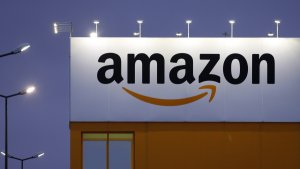What Are The Six Key Strategies For SME Success On Amazon?
Content, storefronts and add-ons - what's the best combination for stellar success?

Amazon is no longer for challenger brands that can't afford space in store shelves. It's quickly moved from a temporary solution during Covid to a first choice model to drive growth.
But it's a saturated market. Over 295,000 online businesses signed up in 2021, and this figure is expected to grow by 1.4 million at the end of the year.
SMEs striving to be the first choice on Amazon need a deeper understanding of both consumers and their competitors, while also demonstrating how their optimal range trumps the household brand.
Prioritise your content
SMEs have a small window to stop customers clicking through to the next product page. Don't hamstring yourself by not using all the imagery and content slots each page has to offer.
Tell a story with A+ rich media. Videos informing customers how a product is used and imagery of how it sits in the home will win over traditional front-to-back packaging graphics that leave more questions than answers.
For your copy, use bullet points, keep it clean and use the space Amazon provides. Many people search on Amazon rather than Google, so you need to employ SEO here too.
Advertising test and learn
SMEs on tight margins could be wary of allocating too much spend on advertising. But an understanding of where established competitors are placed on key listings, like best-sellers and suggestions, offers a headstart in where the best homes for paid-for posts are.
Researching a competitor's keywords also informs what language garners the most impressions. Brands can then use Amazon's auto-campaign feature, which uses keyword insight to place ads in relevant listings and pages, for a refined analysis on which words are most effective in reaching their target audience. And more importantly, which are most successful in driving sales.
Build a growth flywheel
There isn't one single hack that guarantees success on Amazon. Different strategies complement each other to ensure brands reach as many eyes as possible. It can be a virtuous circle.
While a new product inevitably begins at the lower ebb of a listing, advertising in appropriate locations soon puts sellers on the radar of potential customers.
If SMEs can then incentivise new customers to leave reviews, i.e. through personalised thank you notes, they'll improve their organic ranking on listings - and the wheel keeps spinning.
An alchemy of algorithmic work through advertising and first-class service generates greater visibility across the platform and also ensures loyalty from customers.
Use the popularity of established brands for visibility
Many consumers research products, not brands. With that in mind, SME brands shouldn't worry about being swallowed by household names on Amazon. In fact, they should use it to their advantage.
While competitively-priced products with unique functionalities can certainly win over iconic brands, the bottleneck online has always been visibility. But Amazon's ASIN Targeting allows sellers to place advertisements directly onto competitor product pages, filtering out the risk of showcasing products on an irrelevant listing. It also helps to start a relationship with a customer already interested in the category.
Use all of the advertising features
Amazon is awash with simple yet understated advertising tricks – and it's not just exclusive to one platform. Products can travel far and wide with its offsite retargeting ads, which displays products a user has searched on third-party platforms for up to 28 days. A distracted shopper can soon find themselves back to the listing when nudged by an ad.
Sponsored displays ads are also an effective tool in building broader awareness across the different corners of Amazon: product detail pages, search results, and even the main home page. This tool piques the interest of shoppers on a targeted search and those exploring wider categories.
But an SME's personality is the best form of advertising. Amazon Storefronts allow sellers to engage with shoppers just like bricks & mortar stores by showcasing hallmark holiday ranges, discounted offerings, and new product launches.
Businesses can simultaneously curate landing pages with its A+ add-on; integrating banners, text boxes, and enhanced imagery that mirrors a traditional website.
SMEs have opportunities to build bespoke Amazon profiles. This matters to consumers. Those with curated storefronts and landing pages tell a brand story while also reassuring shoppers wary of counterfeits.
Use the right tools
Fast-growing SMEs operating on Amazon need to track precise metrics: monitoring which products gain the most impressions, how long a customer stays on a landing page, and which ones convert into sales.
But an insight-led strategy on Amazon will only have benefits if activity is optimised 24/7.
Those willing to invest in platforms that digest and make sense of the data will succeed in an acute targeting of their key audience while simultaneously attracting new visitors. It's also invaluable in making informed decisions on where a budget is best allocated.
A behemoth platform like Amazon is both an obvious and scary place to launch, but SMEs are best positioned to grow here. Those once scratching their heads on how to rival the bigger players are given a clear funnel on how to increase their listing positions and the number of pages their products land on.
Brands can avoid the expensive overheads of traditional bricks & mortar stores, without worries about being devoured by the marketplace.
The right content, storefronts and A+ add-ons allow brands to carve their own suites that build trust with consumers - all while taking advantage of the wider Amazon ecosystem.
Matt Howes is client partner at Amazon specialist agency Melody.
Thanks for signing up to Minutehack alerts.
Brilliant editorials heading your way soon.
Okay, Thanks!

